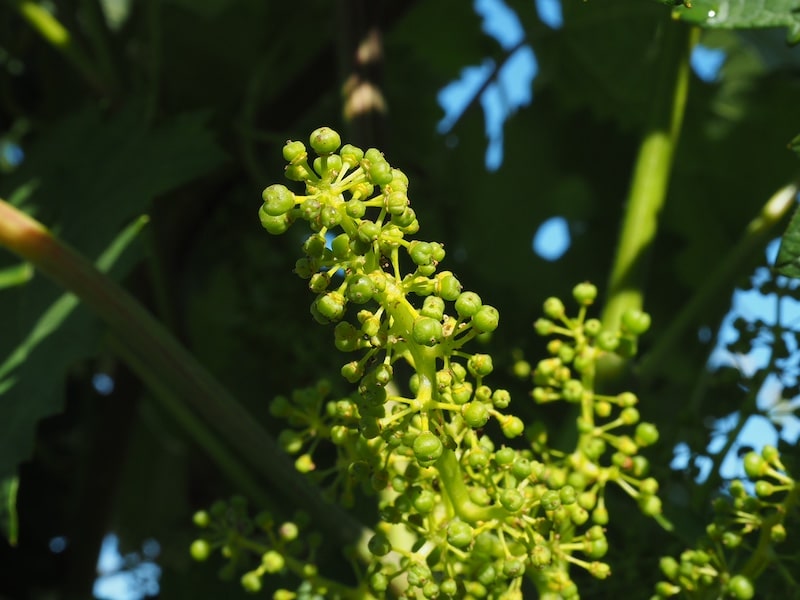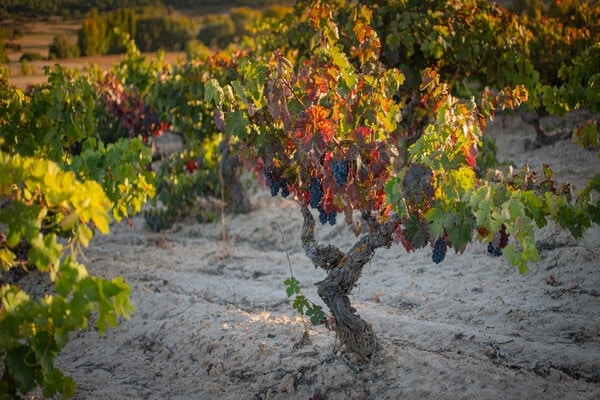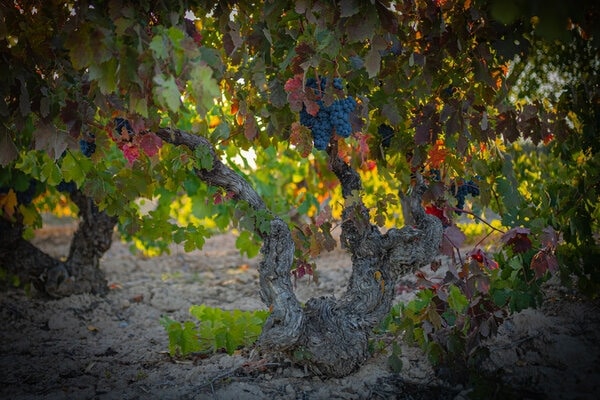The vineyard does not leave a second of respite and each work is important in the manner and in the execution time. A task well done, but at the wrong time is no longer so good, affecting the phenological stages of the vine. For this reason, reading the weather in vineyard work is once again essential.
What is the life cycle of a vine?
For the wines to reach our glass, a vegetative cycle of the vine takes place that is repeated annually. The different vegetative periods are:
- Sprouting: Flowering of the vine at the end of April.
- Flowering: This event takes place around June 20th.
- Fruit set: Transformation into fruit, it happens 10-12 days later.
- Veraison: During the summer, the grape changes color until it reaches its hue. It begins in the middle of August and finishes at the beginning of September. Growth stops and the vineyard concentrates on ripening the grape.
- Ripening: Throughout September. When we conduct the analytics. Sugar increases.
- Harvest: The vegetative period ends with the collection of the grapes and the subsequent fall of the leaves.
Vegetative cycle in the Ribera del Duero
This year, we have had a very cold start, and the January snows gave us a very important contribution to the water reserves. The spring has been good in rains, although a little late. They have just arrived when the vegetative cycle was already underway with the grape flower, and they have had a high risk of Mildew (a disease caused by fungi) that today has been fully controlled.

Unfortunately, in the Ribera del Duero we have suffered several hail storms that have affected at least 10% of the vineyards of the entire D.O. Luckily, in our 80 hectares of vineyards, the affected areas have been few and we have acted quickly with foliar fertilizers that help the plant to heal the wounds and to continue its growth rate with some normality.
Blooming in the Ribera del Duero
Both the flowering and the setting of the vine have been very good and it is already expected that the vintage in some younger plots will have to adjust the yields. In the phenological state of the vineyards, well-formed and long clusters are already visible. With this information, we predict that the bunches do not compact and their berries remain loose, which ensures good health and correct ripening.

We are currently finishing the stripping works, which consists of eliminating the first 3 axial shoots of the rods that bring the production. This work of caring for the parts of the vine, favors aeration, a factor of vital importance in the health and in the exhibition of the clusters. The health and good display of the bunches result in a first class raw material, which makes it possible to make the most emblematic and award-winning wines of Resalte.
Combined with different altitudes, types of soil and solar orientation, it allows us an incredible complexity and nuances in the wines, virtues that have allowed us to be considered one of the best Ribera del Duero wines and the world.

At this time, the berries of the cluster begin to fatten and by eliminating those axial shoots we are redirecting the energy, via photosynthesis, from the plant towards the clusters and not towards the growth of those shoots that will prevent proper development of the cluster.
It is said that a good nude is worth more than a phytosanitary treatment in the care of the vine and we cannot agree more. In Resalte, following our policy of minimal intervention, we prefer to direct our work towards good viticulture practices and minimize the number of treatments, although these are in most cases of an ecological nature such as the application of elemental sulfur that can be accompanied of a little copper if we see that the humidity can be high.
Vegetative period
Until veraison, the bunch remains green and with photosynthetic capacity. In mid-August, its color turns to the purple typical of red grapes. At that moment the grape veraison begins and the plant must prepare to stop growing and that all its effort is focused on the development and maturity of the berries.

Although it is still early days, we are very optimistic about this harvest. The vegetative cycle of the vine continues at a good pace and the water reserves seem good. This will ensure that, even if the temperatures rise, the plants will not enter into excessive water stress and can develop small berries, with good acidity and a high concentration. Great virtues so that, once the withering of the vine, the high quality wines that you all expect from us can be made.
Enrique Andrades
Technical Director.



